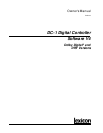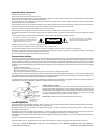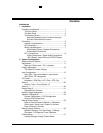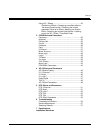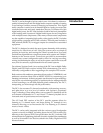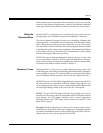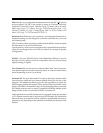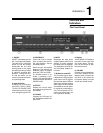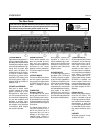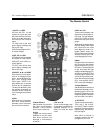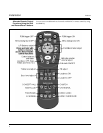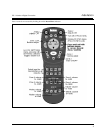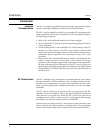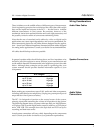
Lexicon
Using the
Documentation
Because the DC-1 is designed to be customized for your system and your
listening space, the information required for installation is extensive.
The Owner's Manual is designed to assist you in installing, calibrating and
operating the DC-1. It should be used in conjunction with the remote control
when configuring the system to perform optimally in your environment.
This manual was written with the underlying assumption that the installer
is familiar with audio/video system installation. An Installation Worksheet
is provided at the end of this manual for documentation of the settings
arrived at during the calibration procedure.
NOTE: This manual, although designed for software Version 4, is also valid
for use with software Version 3. The only significant difference in documen-
tation is the inclusion of Information regarding Surround EX functionality,
which became available with the release of Version 4.
Glossary of Terms
Although the DC-1
performs very complex signal processing, a great deal
of effort has gone into making the technology behind the effects as transpar-
ent as possible to the user. To understand the overall organization of the
unit, it is helpful to define those few terms which are unique to the DC-1.
AC-3 FX The term AC-3 FX (Dolby Digital Effects) is used to describe all of
the effects which are compatible with Dolby Digital input signals. Any
AC-3-capable software and/or source components should be labeled with
a Dolby Digital badge, similar to the one on the DC-1 front panel.
DTS FX The term DTS FX (Digital Theater System Effects) is used to
describe all of the effects which are compatible with DTS Digital Surround
input signals. Any DTS-capable software and/or source components
should be labeled with a DTS badge, similar to the one on the DC-1 front
panel (DTS versions).
Downmix describes the process of creating a two-channel output from a
multichannel (>2) signal. Downmixing is necessary to maintain compatibil-
ity between multichannel formats such as Dolby Digital and DTS, and two-
channel devices, such as stereo tape decks and VCRs.
These enhancements ensure that film soundtracks, which are typically
mixed for the acoustics of large theaters, sound as the filmmakers intended
when played back in the relatively small environment of a home theater.



